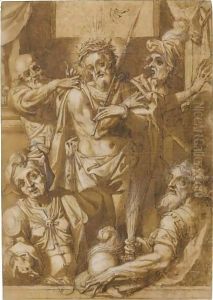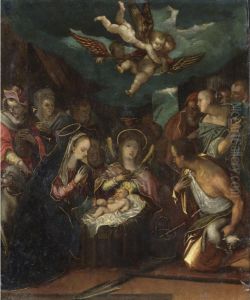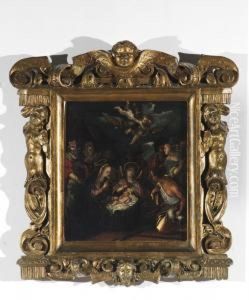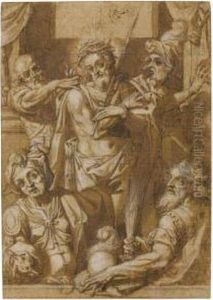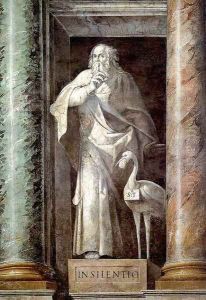Paris Nogari Paintings
Paris Nogari, born in Rome in 1536, was an Italian painter and engraver who made significant contributions to the art world during the late Renaissance period. Despite being less renowned than some of his contemporaries, Nogari's work reflects the intricate dynamics and evolving aesthetics of his time, showcasing his adeptness in embracing both the Mannerist and early Baroque styles. His father, Gaspare Nogari, who was also a painter, provided Paris with his initial training and introduction to the art world. This foundational education in the arts was crucial in shaping Paris Nogari's career and his eventual development into a versatile artist.
Nogari's body of work is noted for its religious themes, a common focus during the Renaissance, as the Catholic Church was a major patron of the arts. He excelled in creating altarpieces, frescoes, and portraits, with his compositions often characterized by dramatic expressions and a meticulous attention to detail. One of his notable works includes the altarpiece for the church of San Girolamo della Carità in Rome, which displays his mastery in depicting biblical scenes with emotional depth and technical precision.
Throughout his career, Paris Nogari also engaged in engraving, a practice that allowed his designs to be circulated more widely and increased his influence beyond Rome. His engravings, rich in detail and expressive line work, contributed to the spread of the Mannerist style across Italy and into other parts of Europe. Nogari's ability to adapt and innovate within the prevailing artistic trends of his time, while still maintaining a unique personal style, is evident in both his painted and engraved works.
Despite his contributions to the arts, Paris Nogari did not achieve the same level of fame as some of his peers, such as Michelangelo or Raphael. However, his work remains an important part of the study of Italian Renaissance and Mannerist art, providing insight into the transitional period leading into the Baroque era. Paris Nogari died in Rome in 1601, leaving behind a legacy that, although not widely recognized outside of art historical circles, is valued for its contribution to the development of late 16th-century Italian art.
